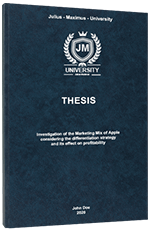
The process of citing sources can sometimes be difficult for university students to navigate. The different citation citing sources, the various ways they are used, and the rules governing them all contribute to this difficulty. However, students need to understand how citing sources works so that they don’t commit plagiarism or accidentally violate their school’s policies when writing their research papers using citing sources.
In this blog post, we will discuss some questions you may have about citing sources, as well as a few guidelines for citing sources correctly, so you avoid these problems!
in Your Thesis
Citing sources - FAQ
Citing sources is important for two reasons. First, it allows the reader to know where you got your information from and check that the source they are citing agrees with their own research. Secondly, citing sources tells readers that what you have written is original work.
Tip: If you are done with your academic work, we can help you with dissertation printing!
If you do not include citations of citing sources, your work can be considered plagiarism. This is when someone takes the information from a source and copies it word for word without citing where they got it from in their own paper or project.
An in-text citation is a parenthetical reference usually abbreviated and follows a summary, a quote or a paraphrase. Depending on the article style you are using for your paper (MLA), this may include the author’s last name and year of publication—enough information so readers can find it with ease when they check through their bibliography. The in-text citation of the citing sources is designed to tell the reader which sources you had used but do not provide any information about where and when they were published.
On the other hand, a bibliography of the citing sources is a list of the sources you used in writing your paper. It should be at the last page of your paper and arranged in alphabetical order. Each reference should have author name, title and the year when the journal was published so that readers can find out more about any item on their own time and without having to wait for permission from an instructor or other formative source. Full bibliographic citations of citing sources give readers more details, including the author’s name and publication date of the source being cited. Technical terms can be included on a separate line in brackets.
One of the most effective ways to show your sources is by citing sources at the end of sentences and using language that refers back to those citations. For example, if your entire paragraph only refers to a single source, it’s not always necessary for each sentence in which they are mentioned to have an individual citation. However, it would be best if you made it clear what these references refer to – either through other words or with “an outside-source signal phrase” like “in this study.”
Citing sources: Definition
A citation is a reference to an outside source, which can range from the name of a book or article to details about where and when it was published. Citing sources tend to serve two purposes. First, citations are designed so that readers will know what your research has been based on; second, they provide a means of verifying sources.
Citing sources: Citation styles
When do you need to cite your sources?
Citing sources citations are necessary when you use someone else’s words, paraphrase them or summarize their ideas. In this case, the citation will be a reference to an outside source – either citing it in full with page numbers and so on from where your phrase came; or with just enough detail for any reader interested in tracking it down further. You may also need a citation if you are saying something that most people generally accept.
What are different citation styles?
There are various referencing & citation styles. The two most common ones are the APA style and MLA format. APA style and MLA format can be used depending on the type of information being cited. APA is more commonly used citing sources in social sciences, business, and education. MLA is more often used for humanities subjects such as English literature or history. It all depends on what type of information you are citing.
In-text citations and full references
APA in-text citation and full referencing
The goal of APA citation citing sources is to make research more accessible by including authors, date of publication, publishing company (or journal), title or article name, volume number(s) if applicable, page numbers where information was found.
When using APA format, follow the author-date method of in-text citation. This means that the last name and year should appear in the text (Daniel, 2020). You will put a complete bibliography in the last page of your paper.
You are referring to an idea from another work but not directly quoting it or making reference altogether? If so, you only need to make a mention and just mention who wrote what when without page numbers.
Citing sources in MLA format
MLA format follows the author-page method of in-text citation. This means that you should always include the author’s last name and page number(s) from which a quotation or paraphrase came when referencing them in your paper, as well as including their full details on your Works Cited Page at the end of it. The authors’ names can appear either within brackets following a quote or written out sentence-wise if they are referenced the first time through with no previous mention.
When deciding how to cite your source, start by consulting the list of core elements. These are the general pieces of information that MLA suggests including in each work Cited entry. In order for a citation to be accurate and complete, there must be a title with an author’s name followed by their date published–which is usually found on page 1 or 2 right before where it says ‘page numbers.’
Citing sources in Harvard style
The Harvard referencing style is another popular citing sources using the author-date system for in-text citations.
A citation consists of a person’s last name and year published, followed by brackets with page numbers if directly quoted within the text.
A reference list should be ordered alphabetically by the last name of the first author. Reference with no author is ordered alphabetically by their title’s significant words, not full stop and space between each letter in abbreviations for letters. If there is no discernable author, title and date are used.
How to check plagiarism
In order to check plagiarism, you will need to upload your paper to a website. These websites allow students to have their papers read by machines instead of professors to find any form of plagiarism that could be present. This is done through a process known as ‘text mining.’
Here you can start your plagiarism check now!
In a Nutshell
A well-written and researched college or university level school research paper requires citing sources, attributing the work of others to them as appropriate, and demonstrate that you’ve done proper research in their field. Without citations, it’s impossible to tell if someone has plagiarized another person’s ideas or words (intentionally or not), and it’s also impossible to tell if sources are credible.

